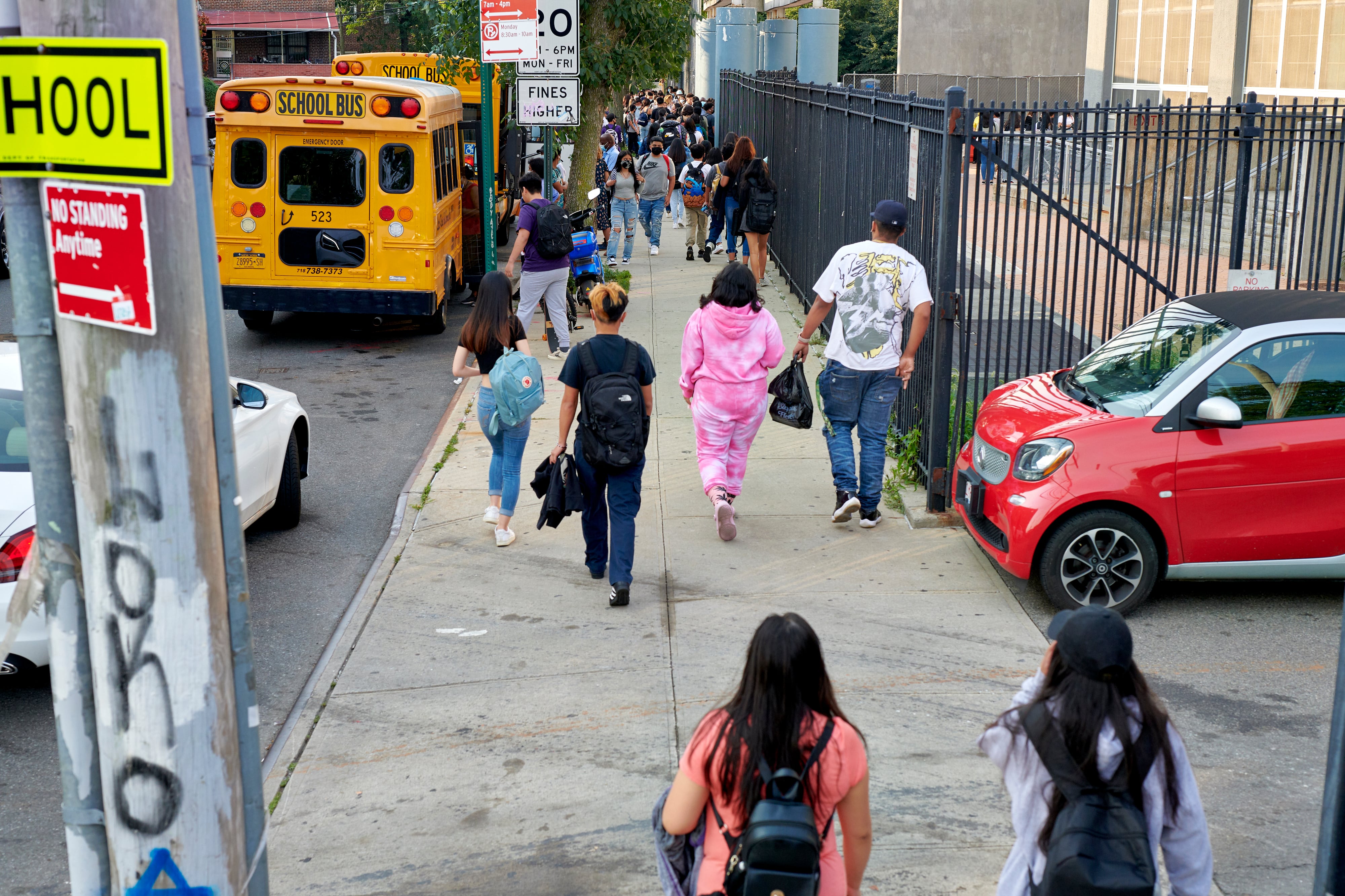Sign up for Chalkbeat New York’s free daily newsletter to keep up with NYC’s public schools.
Please note the 2025 deadlines are different from the ones stated in this article. For families applying to high school in 2025, the application deadline is Dec. 3. And middle school applications will be open from Oct. 15 to Dec. 12.
As New York City’s notoriously complex high school admissions process officially gets underway on Tuesday, many families are refreshing their MySchools accounts to find their kids’ randomly assigned number, often called a “lottery” number. Families applying to middle school will be in the same situation on Oct. 9.
Many hope that having a “good” number will improve their students’ odds of getting into sought-after schools, but what do these numbers really mean?
The string of 32 numbers and letters is one component of the admissions process, but it can be difficult for parents to decode and often causes a huge amount of stress for families. Applicants will be able to view their random numbers, which were expected to be available on Tuesday, in their MySchools account after starting their application.
High school applications are due by Dec. 4, while middle school applications are due Dec. 13.
For high school, the process of narrowing the city’s more than 700 programs across over 400 schools can be especially daunting for the tens of thousands of eighth grade students applying each year. Many families often rely on their child’s lottery number to help them focus their search, trying to use it to gauge their odds at different programs. This year, for the first time, families applying to high school will also have access to a new tool in MySchools that gauges an applicant’s chances of admission to a particular program based on a student’s random number as well as their home borough, their course grades, and more.
Also new this year: High school applicants can apply to more than 12 schools — a change aimed at adding extra flexibility to the process, though some parents worry that it could inject further stress into an already taxing experience.
And for the first time, middle school applicants can apply to schools across the city instead of largely being limited to their home district. Applicants will continue to have priority at middle schools within their local zone and district, according to city officials.
Elissa Stein, an admissions consultant who runs the service High School 411, praised the city for working to make the admissions process more transparent in recent years. But she wished the city’s Education Department would make information available even earlier to parents, noting that many begin touring and researching schools well before October.
“Seeing a school and saying, ‘Oh my gosh, I love this so much,’ and then finding out that you really don’t have a chance of getting in is an extra heartbreak that could have been prevented,” she said. “So I think that having grades available, the screen groups available, the random lottery numbers available early would be really beneficial to families.”
Here’s how the random number factors into admissions and how to understand what your number means.
How do I read my random number?
There are 32 numbers and letters in each random number, and the first digit or two can help you broadly interpret them. You can read your random number from left to right, with priority moving from 0-9 and then from A-F.
A random number beginning with 0 means an applicant will have a relatively high priority when decisions are made based on the number, while the opposite is true for an applicant whose random number starts with an F.
How does the random number impact admissions?
The random number is used as a tiebreaker when there are more applicants in a particular priority group than seats available at a school.
Schools across the city take different approaches to evaluating applicants. Selective schools sort applicants into four different priority groups based on their seventh grade GPAs in core subjects (with seats doled out separately for general education students and for students with disabilities), while other schools might primarily admit students based on their random number.
Some schools also require admissions essays or auditions, while others participate in a diversity initiative, setting aside a certain number of seats for students who are low-income, English language learners, or live in temporary housing.
And eight of the city’s specialized high schools that require a test for admission, including Stuyvesant and Bronx Science, along with LaGuardia High School of Music & Art Performing Arts, are separate from the rest of the admissions process.
At schools with open or educational option admissions, which primarily consider an applicant’s random number for admissions, the numbers can play an especially large role in determining admissions. Educational option programs set aside seats for students at different academic levels to promote academic diversity.
At screened schools that consider grades, and at those that require admissions essays or auditions, the random number only impacts admissions decisions between students who otherwise have equal priority.
In other words, at selective schools, a student with a lower priority random number could still receive a seat before another applicant, provided the student was in a higher priority group based on their grades or other admissions criteria.
Julian Shen-Berro is a reporter covering New York City. Contact him at jshen-berro@chalkbeat.org.






